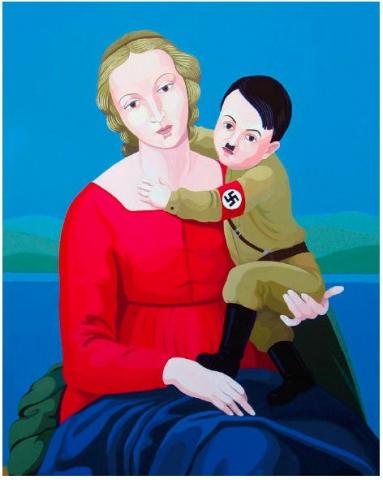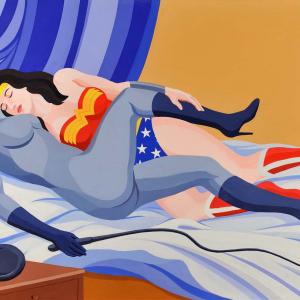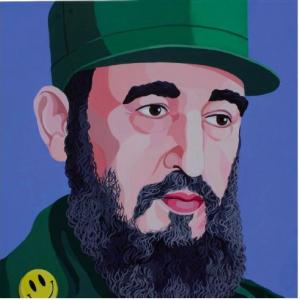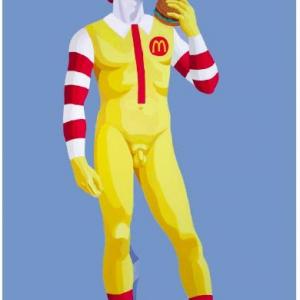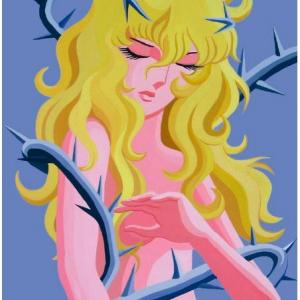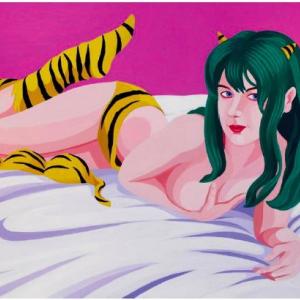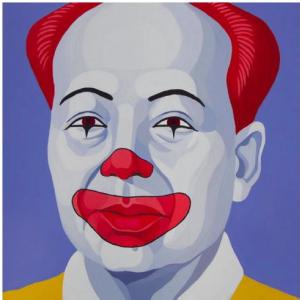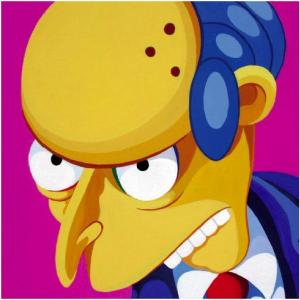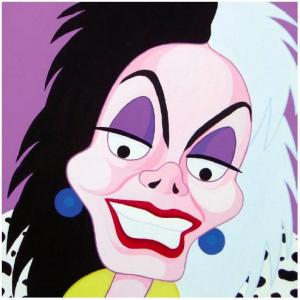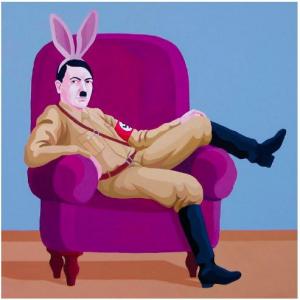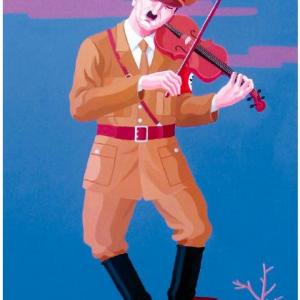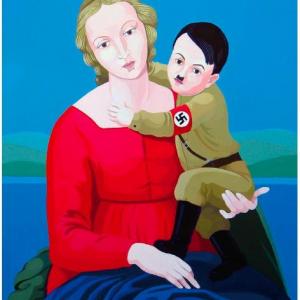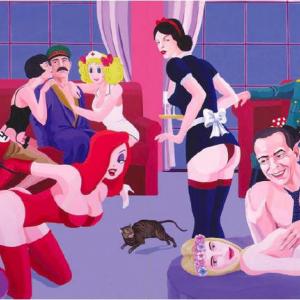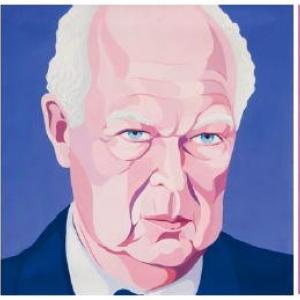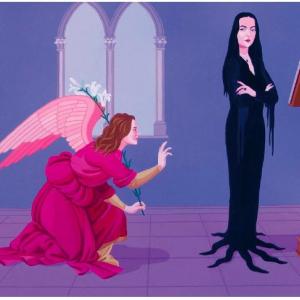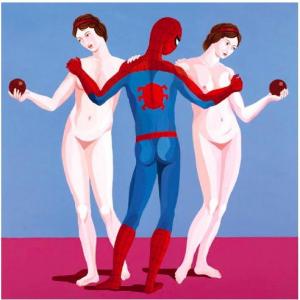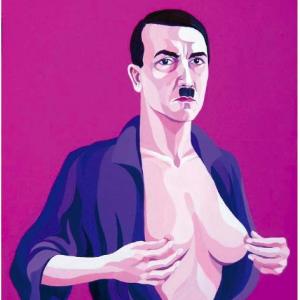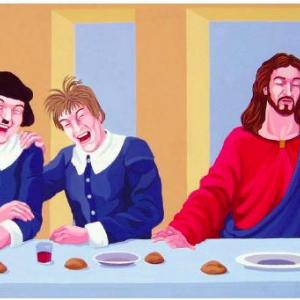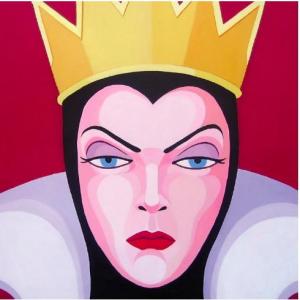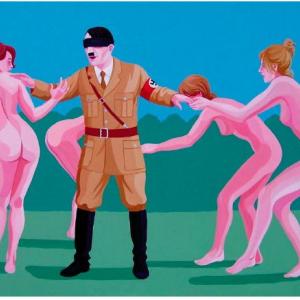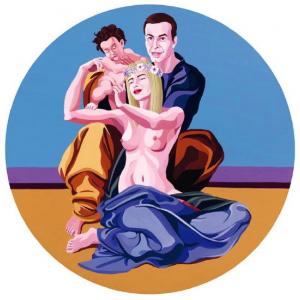Giuseppe Veneziano
Giuseppe Veneziano was born in the town of Mazzarino (Caltanissetta, Sicily) on February 22, 1971 and lived in the municipality of Riesi (province of Caltanissetta) up to the age of 18. In1996 he graduated from the University of Palermo with a degree in Architecture. While studying, he collaborated with several newspapers (The Giornale of Sicily, La Sicilia and Stilos) as a cartoonist and illustrator. In 1997 he moved to the city of Bologna which allowed him to collaborate with the Glauco Gresleri Architectural Studio. In 1998 he returned to Riesi where he opened his own studio. Alongside his activity as an architect, Veneziano also realized cartoons for several editing houses (Paruzzo Editors, Il Capitello Editor).
From 2000 to 2002 he held the position of Director of Didactics and Professor of Art History at the Giorgio de Chirico Academy of Fine Arts in Riesi. In the year 2002 he moved permanently to Milan to dedicate his
energies exclusively to teaching and painting; he still today maintains his residence there.
The first time that the artwork of Giuseppe Veneziano was noticed dates back to 2004 during an exhibition entitled “In-Visi” curated by the writer Andrea G. Pinketts, and held at the Milanese pub Le Trottoir. Amongst the works displayed, a gigantic portrait of Osama Bin Laden. However the most debated work was the portrait of Maurizio Cattelan with a noose around his neck. Veneziano hung the work from the same tree where a month earlier the Paduan artist had hung three ragdoll children. Both portraits of Bin Laden and Maurizio Cattelan were published on the cover oF FLASH AR T magazine.
In 2006, Veneziano made headlines for himself during the exhibition “American Beauty” held at the prestigious and historic Milanese gallery, Luciano Inga Pin. One of the works presented was a painting that
depicted the decapitation of the illustrious writer Oriana Fallaci, entitled “Occidente, Occidente”. According to the artist, his intentions were meant to be a reflection on the atmosphere of fear that most of Europe was experiencing post-September 11th and after the terrorist attacks set off in Madrid and London. During the opening days of the exhibition, it was broadcast on both national and international news media and a debate was initiated in which Dario Fo, Nobel Prize winner; Roberto Calderoli, Italian Minister; photographer Oliviero Toscano; the journalists Lucia Annunziata (editorial, La Stampa) and Renato Farina (editorial; Libero) and well-known art critics Flavio Caroli and Philippe Daverio all intervened. Even an outraged Oriana Fallaci herself wrote several articles in The New Yorker magazine. Many American blog spots accused Europe of anti –American sentiments, using the Giuseppe Veneziano exhibition as an example. In 2007 the artist participated in the 6th edition of the St. Petersburg Biennale where he achieves an award.
In 2008 he is amongst 20 artists invited to represent Italy at the “Artâthlos” exhibiton held during the XXXIX Olympic games in Beijing, China. In 2009 once again a painting by the Sicilian artist entitled “Novecento” captured the interest of both the public and media. The work is a reflection on the rapport between sex and power. Several protagonists of 20th century political history (Hitler, Stalin, Mussolini, Berlusconi…) are mated with cartoon heroines and porno-stars. The work was christened “The Cavalier’s Orgy” by the press. In the foreground of the enormous painting, Berlusconi is pictured in bed with Cicciolina. The work was displayed two months before the scandal broke over the parties taking place at Berlusconi’s residences; it was also published on the cover of the book by Paolo Guzzanti, “Mignottocrazia” (best translates to “Bitchocracy” or “Whore-ocracy”). In that same year during the Verona Art Fair, the painting, “Madonna del Terzo Reich” (The Virgin Mary of the Third Reich), which represents a revised version of Raphael’s Madonna Cowper,holding baby Hitler in her arms. The work was censured and the name of the artist was once again in the spotlight of national and international media. The Mayor, the Bishop and the Rabbi of the Jewish community in Verona all requested that it be removed. After the censure, under the empty space where the painting had previously hung, Veneziano sparked a protest declaring his right to freedom of expression. The writer Aldo Busi intervened in support of the artist.
The painting was once again displayed during the anthological exhibition of Giuseppe Veneziano entitled “Zeitgeist”, held on July 2010 in Pietrasanta (Lucca). Also in this occasion, fierce protests were drawn from the local Parish priest. The municipality of Pietrasanta revoked its patronage even before the inauguration and imposed that images of the work were not to be diffused, although posters had already been put up. The Mayor of Pietrasanta disassociated himself from the exhibition, but did not close it notwithstanding continuous pressure from the Bishop of the town of Lucca. In all the churches of Lucca, the Archbiship of Pisa published a letter declaring a ban on the entire exhibition. In defense of the artist diverse intellectuals intervened amongst which were Vittorio Sgarbi, Giampiero Mughini, Andrea G. Pinketts, etc… The exhibition remained open to the public and was an enormous
success with over 10,000 visitors. During this period, the work was noted by gallery dealer Stefano Contini who purchased it as an addition to his prestigious personal collection. He also invited the artist to become part of his team of artists represented through the Contini galleries.
In 2011 Vittorio Sgarbi invited him to participate in the 54th edition of the Venice Biennale with an exhibition in the Italian Pavilion. In this highly esteemed location the artist exhibited the work, “Solitamente vesto Prada” (I Usually Wear Prada). The work was seen by stylists Dolce&Gabbana who commissioned two new works for their collection.
In 2012, Ivan Quaroni chose Veneziano amongst 60 Italian artists that participated in the Italy-China Biennale.
By critics and art magazines Veneziano is recognized as one of the maximum exponents of “Italian New Pop” and of the group “Italian Newbrow”.

